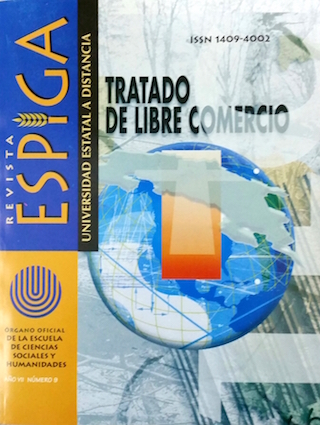Ricoeur's theory of narrative time and one hundred years of solitude
DOI:
https://doi.org/10.22458/re.v5i9.1114Palabras clave:
No presentaResumen
Paul Ricoeur´s narrative theory of time proposes that we, during our reading, move backwards and forward in narrative time and that “temporality springs forth in the plural unity of future, past and present” (167) . In utilizing his theory of time and the idea of cyclical time as a prominent characteristic in twentieth century literature, I attempt to apply his intriguing theory to an exemplary novel, One Hundred Years of Solitude (1967) by the Colombian Gabriel García Márquez. The essay demonstrates how the circularity of the imaginary travel and the linearity of the quest as such are thus put together. Indeed, time is circular and recurrent rather than rectilinear and progressive in this novel wherein readers are moved between present, past and future time.
Citas
DE TORO, Alonso, 1984. “Estructura Narrativa y Temporal en Cien Años de Soledad.” Revista Iberoamericana , N.° 128, pp. 974
GARCÍA MÁRQUEZ, Gabriel, 1967. Cien Años de Soledad. Buenos Aires: Editorial Sudamericana.
——, One Hundred Years of Solitude. Trans.
Gregory Rabassa. New York: Avon, 1970.
MCMURRAY, George R. Gabriel García Márquez. New York: Ungar, 1977.
——, “The Aleph´ and One Hundred Years of Solitude: Two Microcosmic Worlds.” Latin American Literary Review XIII (1985) : 57.
RICOEUR, Paul. “Narrative Time.” On Narrative. Ed. W. J. Mitchell. Chicago: University of Chicago P, 1980.
ROOT, Jerry. “Never Ending the Ending: Strategies of Narrative Time in One Hundred Years of Solitude.” Rackham Journal (1988):1-25.
SIMS, Robert. “Theme, Narrative Bricolage and Myth in García Márquez. Spanish Twentieth Century 8 (1980):147.
VARGAS LLOSA, Mario. “García Márquez: From Aracataca to Macondo.” Review 70 (1971) : 129.
WILLIAMS, Raymond L. Gabriel García Márquez. Boston: Twayne Publisher, 1984.
Descargas
Cómo citar
Número
Sección
Licencia
Los artículos publicados por esta revista operan bajo licencia de CREATIVE COMMONS (Atribución-NoComercial-CompartirIgual 4.0). El Comité Editorial permite la reproducción parcial o total de los artículos a condición de que se mencione la fuente. Asimismo, los escritos podrán ser colgados y divulgados vía digital, siempre y cuando se mantenga la fuente de su publicación.



